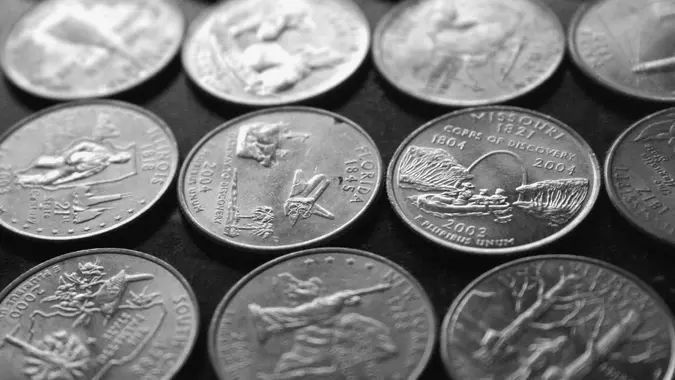8 Things That Were Normal for Boomers, but Are Luxuries Now

Commitment to Our Readers
GOBankingRates' editorial team is committed to bringing you unbiased reviews and information. We use data-driven methodologies to evaluate financial products and services - our reviews and ratings are not influenced by advertisers. You can read more about our editorial guidelines and our products and services review methodology.

20 Years
Helping You Live Richer

Reviewed
by Experts

Trusted by
Millions of Readers
It’s only natural to think that others have it easier than you. But when it comes to financial woes, the numbers tell a clear story — baby boomers grew up in an era when things were simply more affordable.
Here’s a shortlist of some things that were accessible to most boomers but are no longer as affordable for the average American.
Buying an Affordable House
By age 30, only 42% of millennials owned a home, compared to 51% of baby boomers who owned a home at the same age. The main reason? Affordability.
In 1984, the median house sales price was $78,200 at a time when the median household annual income was $22,420. But incomes didn’t keep pace with the housing market. In 2022, the median house sales price had skyrocketed to $433,100, while the median household annual income lagged far behind at $74,580.
In other words, the house sales price-to-income ratio in 1984 was 3.49. By 2022, this ratio jumped to 5.81. With housing affordability officially hitting a 39-year low in 2023, it’s fair to say that buying a low-cost home is a luxury that today’s younger generations just don’t have.
Living in an Affordable Apartment
“If you can’t afford to buy, you rent.” That may have been the conventional wisdom for decades, but it no longer holds true that renting is guaranteed to be a more affordable housing option. In 2023, the rent-to-income ratio climbed to its highest in decades and hit 40%.
In contrast, renters only needed to use around 24% of their income for rent in 1985. The drastic difference in rental affordability underscores the rising costs of housing and demonstrates how people today are experiencing a squeezing effect on their budgets.
Growing Up in a Single-Income Household
In the 1970s, almost half (49%) of all households with children were supported by a single breadwinner. Due to a combination of factors like increasing living costs and the growth of female employment, the percentage of single-income households with children in 2023 has dropped to 30.5%.
While it’s difficult to judge the broader effects of this decline, the trend does highlight the fact that median household income hasn’t been able to keep up with inflation. As a result, fewer families are able to support themselves on the wages of a single parent in the workforce.
Having a Savings Account With a Very High Interest Rate
Gone are the days when you could store your money in a savings account and expect to generate a noticeable return. The current average savings account interest rate stands at a measly 0.45%, which means your savings account won’t even keep up with inflation.
This wasn’t the case for baby boomers. In the ’80s, savings account rates climbed as high as 8%. The high rates weren’t sustainable and led to several bank failures in that decade. Luckily, today, you can find higher rates around 4% or more, but definitely not as high as 8%.
Access to Affordable Healthcare
Americans are spending more than double on healthcare than what they did 40-50 years ago. In 1970, out-of-pocket spending per person was equivalent to $956 in today’s inflation-adjusted dollars. In 1980, that figure grew to $970 in today’s dollars.
By 2022, out-of-pocket spending skyrocketed to $1,425 per person ($1,594 in today’s dollars), representing a huge shift in how the average American needs to budget for their expenses.
Going To an Affordable College
Most baby boomers enrolled in college from the late ’60s to the late ’70s, a time when going to college didn’t require you to take on a huge amount of student debt. When adjusted according to 2020-21 constant dollars, the average tuition for undergraduates at all schools in 1968 only cost $4,715. A decade later in 1978, average tuition had even dropped slightly to $4,416.
But by 2024, average tuition has quadrupled to $17,709 per year.
To put it in different terms, a student in 1970 only needed to work five hours per week at minimum wage to afford one year of tuition at a public university. In 2020, that same student would need to work 28 hours per week to afford the same thing.
Learning To Drive for Free
In the 1970s, 95% of teenagers had access to free public driver’s education. By 2022, the number of states that offered public programs dropped to 10. Now, the average cost that people are paying out of pocket for driver’s ed ranges from $200 to $800.
Being Able To Afford, Well, Pretty Much Anything
When many baby boomers were growing up in the ’60s, the consumer price index, which tracks the cost of consumer goods and services, ranged from 29.3 to 37.7. Want to guess what the CPI is now? In July 2024, the CPI hit 314.5. It just goes to show how much purchasing power has eroded over time.
Here are just a few examples of things that used to cost less, even when adjusted for inflation in terms of today’s dollars.
Average cost of a concert ticket
- 1985: $36.85
- 2024: $123.25
Average cost of a ticket to a baseball game
- 1980: $16.99
- 2024: $53
Average cost of a dozen eggs
- 1985: $2.58
- 2024: $3.08
More From GOBankingRates
- Nearly 1 in 3 Americans Hit by a Costly Holiday Scam, Norton Survey Shows -- How To Avoid This
- Here's What the Average Social Security Payment Will Be in Winter 2025
- How Middle-Class Earners Are Quietly Becoming Millionaires -- and How You Can, Too
- The Easiest Way to Score $250 for Things You Already Do
 Written by
Written by  Edited by
Edited by 

























